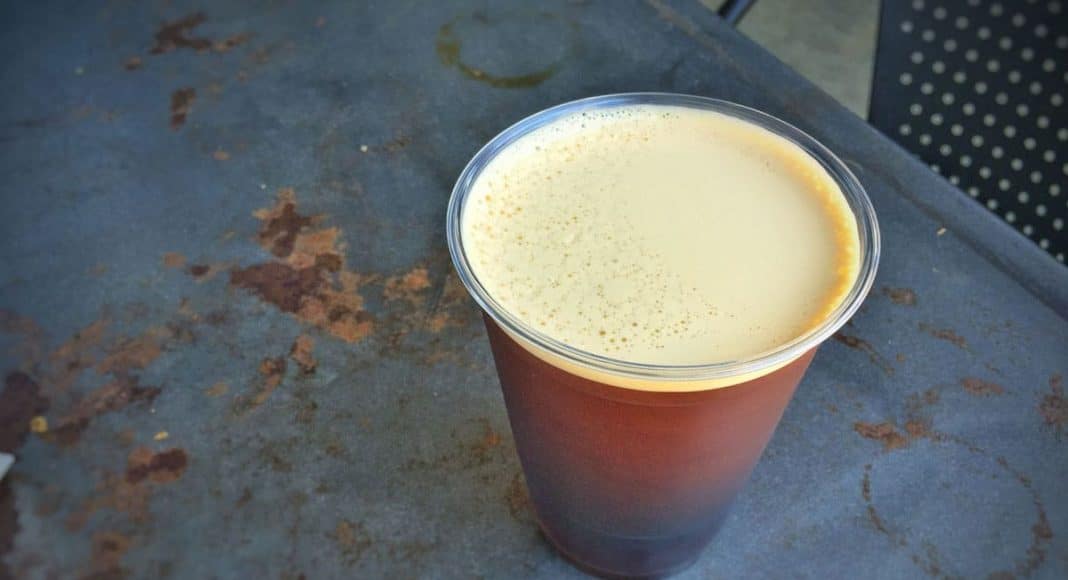To say the very least, we are a culture inundated with cold coffee. The frigid, caffeinated beverage has gone from a low-cost, high-profit staple of specialty cafes, to a ubiquitous beverage served at the Peet’s and Starbucks of the world. It has become synonymous for the coffee-drinking public with the idea of a hot summer day.
Flavor is thought to improve with experimentation and profit is driven by innovation, so a simple jar of cold brew cooling in a fridge has evolved. Cold brew now flows from taps installed into bars, the syrupy beverage moving away from it’s casual, pitcher past into a new world of kegs. And now, well…now the the coffee-consuming public is privy to a selection of beverages that fall under the “cold brew” moniker, nitro cold brew the newest, and most popular addition to the stable. And though nitro cold brew (NCB) may flow from a different tap at your favorite coffee shop, and though nitro cold brew may pour like a hearty breakfast Guinness, make no mistake, this is cold brew — water and coffee — with one simple addition.
https://www.instagram.com/p/BYctVDiAHCb
Don’t let anybody fool you: the basics of cold brew aren’t rocket science. Prior to this wave of cold brew passion, cold coffee was called “iced coffee” and was concentrated hot coffee poured over ice, the melted cubes thinning the beverage to make it drinkable. Cold brew isn’t exactly a galactic step forward from that. Is is, quite simply, ground coffee mixed with water, left to sit for anywhere between 12 and 24 hours, strained through a cloth filter, chilled, poured, presumably over ice and served.
Yes, there are a variety of blends and recipes many coffee companies have perfected in order to create the exact flavor profiles they’re looking for. And yes, some companies are pioneering new and exciting ways to create cold brew to maintain the subtlety and nuance it’s known to lose during the cold brew process (Four Barrel, we salute you). At the end of the day though, cold brew is cold-steeped coffee, filtered, chilled and dumped over ice.
https://www.instagram.com/p/BXyV9ebFlIK/
NCB isn’t any different than cold brew in terms of preparation. You’re still making your basic cold coffee — with the mixing and the filtering and so on — but post cold brew readiness, your nitro cold brew purveyor is infusing the now chilly coffee with nitrogen and pumping it into a keg.
-
Related Story: 7 Super Simple Ways To Add THC To Your Coffee
When NCB is served, the thicker, maltier coffee liquid is released through a tiny-holed valve and then shot past a “disc” of sorts that forms the Guinness-like head and preceding waterfall effect. Nitro cold brew, in general, is served without ice to let those about to consume it ogle the foam’s descent to the bottom of the glass.
The only real difference between cold brew and nitro cold brew (outside of the presence of nitrogen) is flavor.
Cold brew has an occasionally acrid, near-bitter taste — a flavor most cold brewed coffee, regardless of recipe or producer, could be described as tasting. Nitro cold brew, on the other hand, because of the nitrogen, has a smooth mouth feel (again, similar to a Guinness or Boddington — both nitro poured beers) and a richer, nuttier flavor. Like cold brew though, nitro cold brew loses some of its subtlety, on most occasions, taking on a flavor that could be described as “the taste of nitro cold brew.”
-
Related Story: This Is Why Almond Milk And Coffee Suck Together
When you’re vacillating between cold brew and nitro cold brew at the register, know that whatever you decide, you’re getting two beverages that are extremely close to one another: cold-steeped caffeinated coffee served in a glass. Hell, you’re getting the same beverage with the exception that one is produced with an element from the periodic table and one’s not. Leaving you, the cold coffee fan, with only the power of your own preference to guide you.


